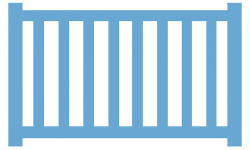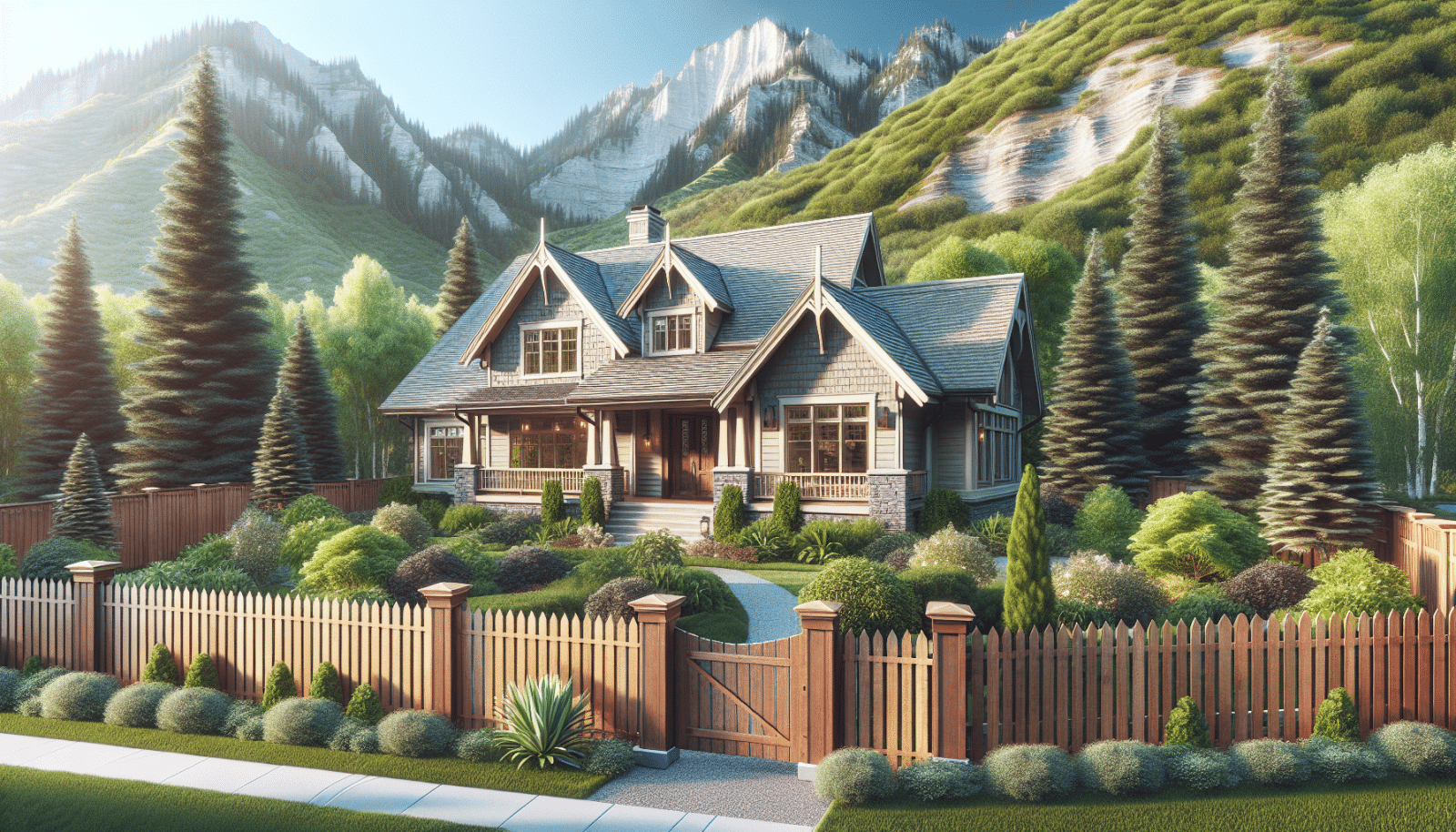Sure, here is a blog post formatted as requested:
Maintaining the perfect fence for your home not only adds to your property’s curb appeal but also ensures your family’s safety and privacy. At Utah Fencing Company, we understand the challenges homeowners face with fence repair and maintenance. That’s why we’ve compiled these top tips to help keep your fences sturdy and attractive. So, whether you’re a seasoned DIY enthusiast or a first-time homeowner, this guide is crafted to assist you in navigating the world of residential fencing repairs like a pro.
Understanding Your Fence’s Anatomy
Before diving into repairs, it’s crucial to understand your fence’s components. A basic fence consists of posts, rails, pickets, and sometimes gates. Posts, which support the entire structure, are the foundation of your fence. Rails run horizontally from post to post, providing a base for the pickets, which are the vertical boards that make up the body of the fence. Recognizing these parts will aid in diagnosing and fixing issues more effectively.
Furthermore, each type of fencing material—be it Wood, Vinyl, metal, or composite—has its unique repair and maintenance requirements. For instance, wood may rot or splinter, while Vinyl could crack or fade. Knowing what you’re dealing with is the first step to effective fence repair.
Regular Maintenance: Your First Line of Defense
Regular maintenance is key to extending the life of your fence and minimizing costly repairs. Inspect your fence periodically for signs of damage or wear. Look for loose or missing boards, rust on metal parts, rot in wood, or any signs of termites or other pests.
Cleaning your fence is also an essential part of maintenance. A gentle wash with a hose can remove dirt and debris. For tougher stains or buildup, a power washer at a low setting or a specialized fence cleaner might be necessary. Remember, preventative care can save you time and money in the long run.
Repairing Loose or Damaged Boards
Over time, weather and regular wear can loosen or damage the boards on your fence. To repair them, you’ll need a hammer, nails or screws, and possibly a saw if you’re cutting new boards to fit. Begin by carefully removing the damaged board, taking care not to damage the surrounding area.
Fit the new or repaired board into place, ensuring it matches the rest of your fence in terms of material, color, and size. Then, secure it with nails or screws. If you’re working with wood, treat the new board with a waterproof sealant to protect it from the elements.
Dealing with Gate Issues
Gates are often the first component of a fence to exhibit wear due to their moving parts and frequent use. Sagging is a common problem that can be fixed by installing a tension rod or adjusting the existing hardware. Rust on metal gates can be treated with a rust converter and repainted to match the original color.
If your gate is sticking or difficult to open, check for and remove any obstructions. Lubricating the hinges and latch with a suitable product can also improve its operation. Regularly checking and tightening hardware can prevent many gate issues from arising in the first place.
Ensuring Privacy and Security
Your fence serves as a barrier to protect your privacy and secure your property. If there are gaps or holes in your fence, they can be patched or covered, depending on the material. For wood fences, a piece of matching wood can be cut to size and attached to cover the gap. Vinyl Fence panels may need to be fully replaced if damaged, as patching is more complicated.
Adding a lock or upgrading the latch on your gate can enhance security. Consider installing motion-sensor lights around the perimeter of your fence to deter trespassers and improve visibility at night.
Tackling Rust and Corrosion
For those with metal fences, rust and corrosion are common worries. Begin your repair by scrubbing the rusted area with a wire brush to remove as much rust as possible. After cleaning, apply a rust-converter product, which will chemically transform the rust into a paintable surface.
Once the converter has dried, painting the area with a rust-inhibiting paint not only hides the repair but also prevents future rust. Regularly inspecting metal components and addressing rust early can significantly prolong the life of a metal fence.
Choosing the Right Materials for Repairs
- Matching the Material is crucial when replacing parts of your fence to ensure consistency in appearance and integrity. Use the same type of wood, metal, or vinyl as the existing fence for seamless repairs.
- Quality Matters when selecting new materials. Opt for high-quality, durable options that are designed to withstand the elements and resist pests or decay.
- Consider Upgrades if consistently repairing the same issues. Sometimes, selecting a more durable material for parts of your fence can save you money and time in the long run.
- Weatherproofing materials such as sealants and rust-inhibitors can protect your fence after repairs, prolonging its lifespan and maintaining its appearance.
- Hardware Selection plays a vital role. Choose corrosion-resistant screws, nails, and hardware, especially if you live in a humid or coastal area, to prevent premature wear.
Professional vs. DIY Repairs
Deciding whether to tackle fence repairs yourself or call in a professional depends on the scale of the damage and your comfort with DIY projects. Minor repairs like replacing a board or fixing a loose hinge are manageable for most homeowners. However, significant damage or structural issues might require the expertise of a pro.
At Utah Fencing Company, we’re always here to help. Our expertise covers all types of fencing materials and repairs. If you’re unsure about a repair or if it’s time for a fence upgrade, don’t hesitate to contact us for advice or a free quote.
Preventative Measures for Future Repairs
Proactive maintenance can significantly reduce the need for future repairs. This includes regular cleaning, promptly addressing small issues before they become larger, and applying protective treatments or paint as needed. Ensuring proper drainage around your fence posts can also prevent water damage and rot.
Additionally, consider the placement of trees and shrubs to avoid damage from roots or branches. Strategic landscaping can enhance your property’s aesthetic while protecting your fence.
Wrapping It Up
Remember, regular maintenance and timely repairs can extend the life of your fence, ensuring it remains an asset to your home. Whether you decide to DIY or call in the professionals at Utah Fencing Company, a functional and appealing fence contributes to your home’s value and your family’s safety.
For expert advice or assistance with fence repairs, reach out to us by phone at 801-905-8153 or Request a Free Quote.




